The steppe polecat is a nomadic animal which typically only settles in one area until its prey, mainly ground squirrels, are extirpated.[4] It mates from March to May, and generally gives birth to litters of three to six kits, which attain their full growth at the age of two years.[5] It hunts for larger prey than the European polecat, including pikas and marmots.[6]
Evolution

Subspecies

As of 2005,[10] seven subspecies are recognized (not included is an extinct subspecies, M. e. beringiae, which was native to Beringia and was much larger than M. e. michnoi, the largest extant subspecies).[11]
| Subspecies | Trinomial authority | Description | Range | Synonyms |
|---|
Description
Skull, as illustrated by N. N. Kondakov.
Pelt
The winter fur is soft and tall, with short, dense underfur and long, sparse guard hairs. The fur is generally shorter and not as thick as that of the European polecat. The guard hairs are especially well developed on the lower back, though still sparser than those of the European polecat. Contrary to the former, the steppe polecat's guard hairs never completely cover the underfur. The base colour of the winter fur is very light yellowish or whitish-yellowish. The tips of the guard hairs are blackish-brown or brown, forming a frosting effect over the yellow underfur. This frosting is stronger in the middle and lower back, where the guard hairs are denser and longer. The guard hairs on the upper back, the flanks, between the shoulders and along the upper neck are extremely short, thus being lighter in colour than the posterior region. The head is piebald, with the eye region and the upper side of the nose being covered by a brownish mask. Behind the mask, a white band crosses the head from cheek to cheek. A small brownish area is usually located in front of each ear. The ears are completely white, while the throat is yellowish-white or almost white. Sometimes, the head is entirely white. The lower surface of the neck is dark blackish-brown or brown, while the chest and forelegs are black or blackish-brown. The abdomen is light, yellowish-straw in colour. The groin is the same colour of the forelimbs. The base of the tail is light in colour, while the tip is dark brown. The summer coat is shorter and coarser than the winter fur, and is not as dense and close-fitting, with a more strongly developed ochreous or reddish tone. The head is, overall, darker than in winter, with greater contrast between the dark and white tones.[2]
Behaviour
Territorial and sheltering behaviours
The species does not usually dig its own burrow, instead using those of marmots, ground squirrels, hamsters, moles, voles, jerboas and others, after slightly widening them. Its burrow is often poorly constructed, as it does not inhabit one long enough to warrant restructuring. Nesting burrows are not lined, and have many outlets, ranging from three to 20. Alongside the nest chamber is a food store. Independently dug burrows are typically shallow and simple in construction.[4]
Reproduction and development
In captivity, mating was observed in early March till the end of the month. In the Moscow Zoo, seven cases were observed of polecats mating from 9 April till 9 June. Symptoms of estrus were noted on 12–13 March, and continued to develop for two to three weeks. After mating, these symptoms disappeared within three to four weeks. The mating season in western Siberia occurs in March, while in Transbaikalia it occurs to the end of May. Copulation lasts from 20 minutes to three hours. Estrus may last longer or be repeated should a female fail to produce a litter or if the litter dies prematurely. Typically, the steppe polecat mates once a year and produces one litter. The gestation period lasts from 36–43 days. Placentation occurs two weeks after mating, with the blastocyst stage lasting seven to eight days. Litters usually consist of three to six kits, though litters of 18 are known.[5]
Kits are born blind and naked, with pale rose skin and a membrane over the ears. At birth, they measure 6.5-7.0 cm in length and weigh 4.5 grams, though polecats born in the Moscow Zoo weighed 10 grams. Usually, the weight of newborn kits depends on litter size. A thin, white underfur appears on the body after three days, and the body length doubles, while the weight increases six-fold at up to 33 grams. Milk teeth erupt around the same time, and the feet begin to darken. On the 20th day, the kits darken in colour and weigh 70-72 grams. The eyes open after 28–34 days, and the kits become more active, to the point of attempting to tear apart prey whilst still relying on the mother's milk. At the age of one month, kits measure 190 mm in length and weigh 138 grams. By the age of 45 days, they are able to hunt young ground squirrels, and begin to target adults at the age of 60 days. The kits remain in the family burrow for 2.0-2.5 months. The kits begin to disperse from July or later, and attain sexual maturity at the age of 10 months. They reach adulthood at the age of two years.[5]
Diet
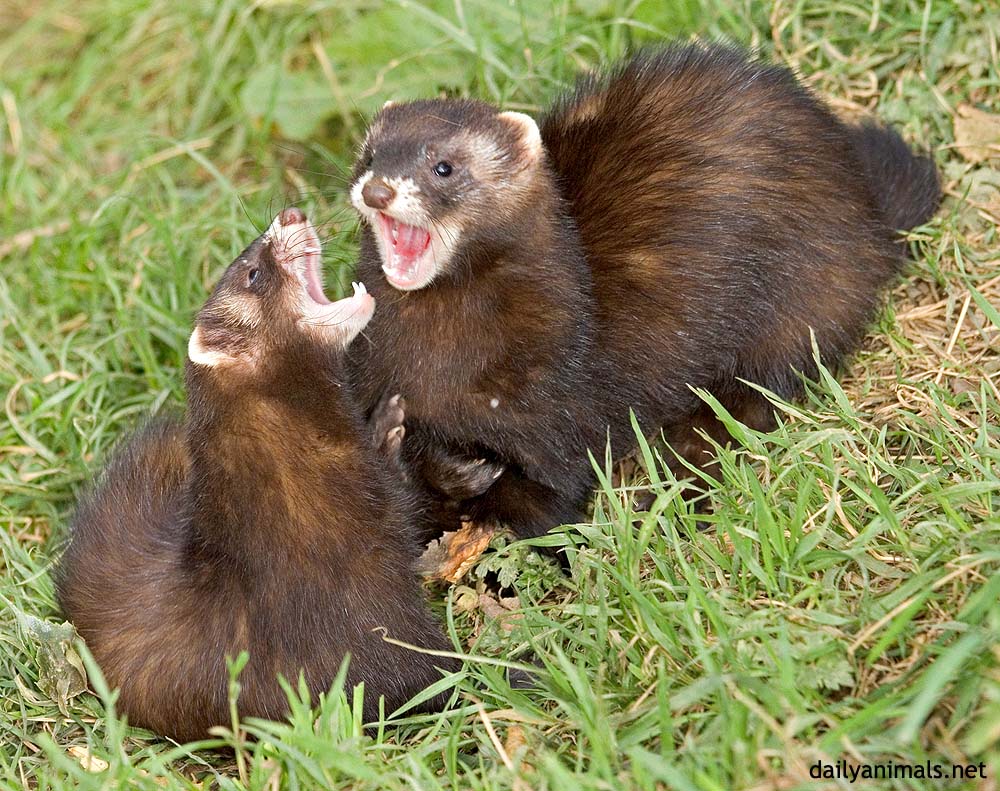
Unlike the European polecat, which feeds mostly on mouse-like rodents, the steppe polecat preys on larger, steppe-dwelling mammals such as ground squirrels, hamsters, pikas and young or injured adult marmots. Ground squirrels are its most frequent prey throughout the year; in warm periods, they are hunted on the surface, while in autumn they are excavated from their burrows. Male polecats often have to widen squirrel burrows to enter them, while young or female polecats can usually enter them easily. In areas where ground squirrels are absent, the steppe polecat feeds primarily on hamsters and pikas, or water voles on the banks of water bodies. Along the shores of rivers and lakes, fish, chickens and carrion may be prey. Birds occasionally killed by the steppe polecat include grey partridges and willow grouse. Amphibians and reptiles are rarely eaten.[6]
Distribution and habitat
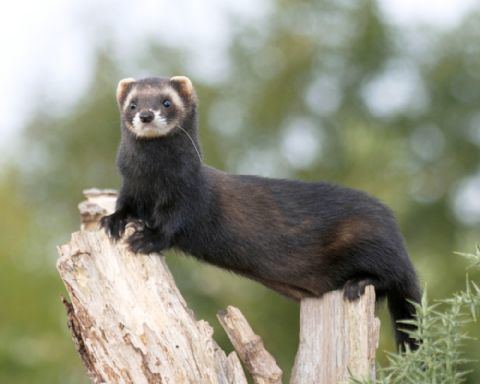
The steppe polecat occurs from Central and Eastern Europe in the west through southern Russia, northern Georgia, Kazakhstan, Turkmenistan, Uzbekistan, Tajikistan, and Kyrgyzstan to Mongolia and northern and western China.[1] In 2014, it has been recorded at an elevation of 5,050 m (16,570 ft) in Upper Mustang, Annapurna Conservation Area, Nepal.[21]
Diseases and parasites

The steppe polecat is weakly susceptible to sylvatic plague, tularemia and canine distemper. Weakened individuals are susceptible to pasteurellosis. Helminth infections, as well as tick infestations are widespread in the species. Up to 11 flea species are known to infest the steppe polecat, some of which are picked up from its prey.[22]
Relationships with humans

The steppe polecat is of great economic value to nations of the former Soviet Union. It kills large numbers of rodents harmful to agriculture and which spread disease; a single steppe polecat can destroy at least 200 ground squirrels a year or 1,500 mouse-like rodents in winter alone. It is also very important to the fur trade of the former Soviet Union. It holds first place among harvested furbearers in Kazakhstan and other regions. However, steppe polecat numbers dropped noticeably during 1926-1929 and 1956–1959. This decline was attributed to changes in steppe landscapes and a decrease in the species' natural prey in connection with the application of chemical methods in controlling rodent populations, the plowing of Virgin Lands and changes in agrochemical methods. The steppe polecat is fairly easy to harvest. It is primarily caught with jaw traps located near inhabited burrows.[23]
Binomial name
Mustela eversmanii
(Lesson, 1827)
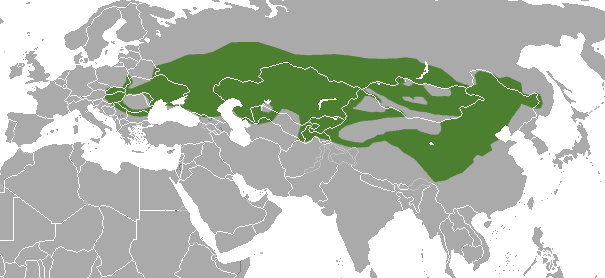
Steppe polecat range

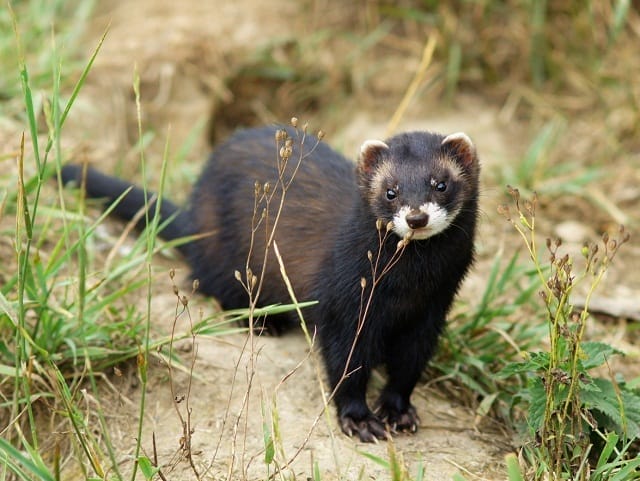





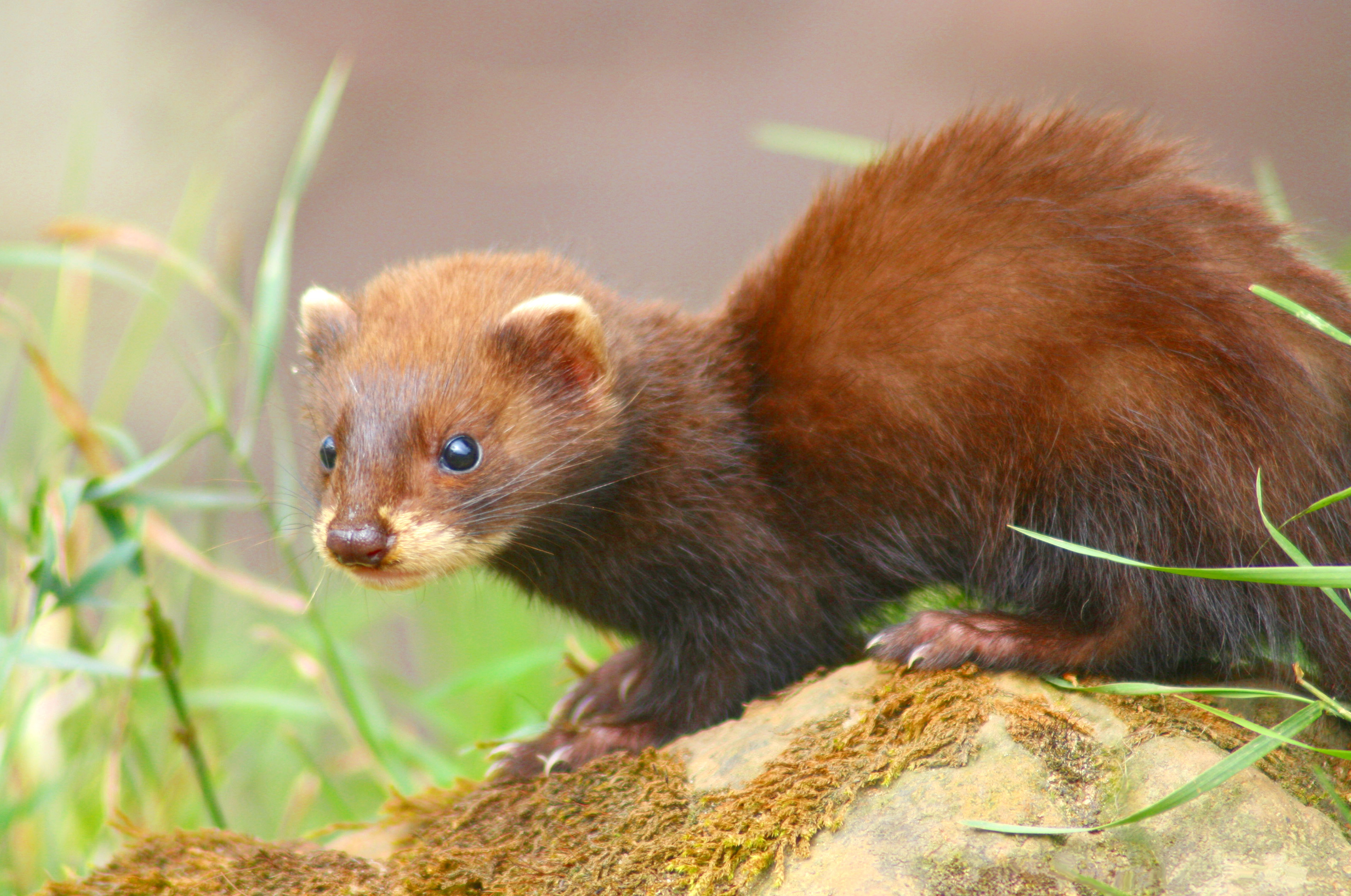

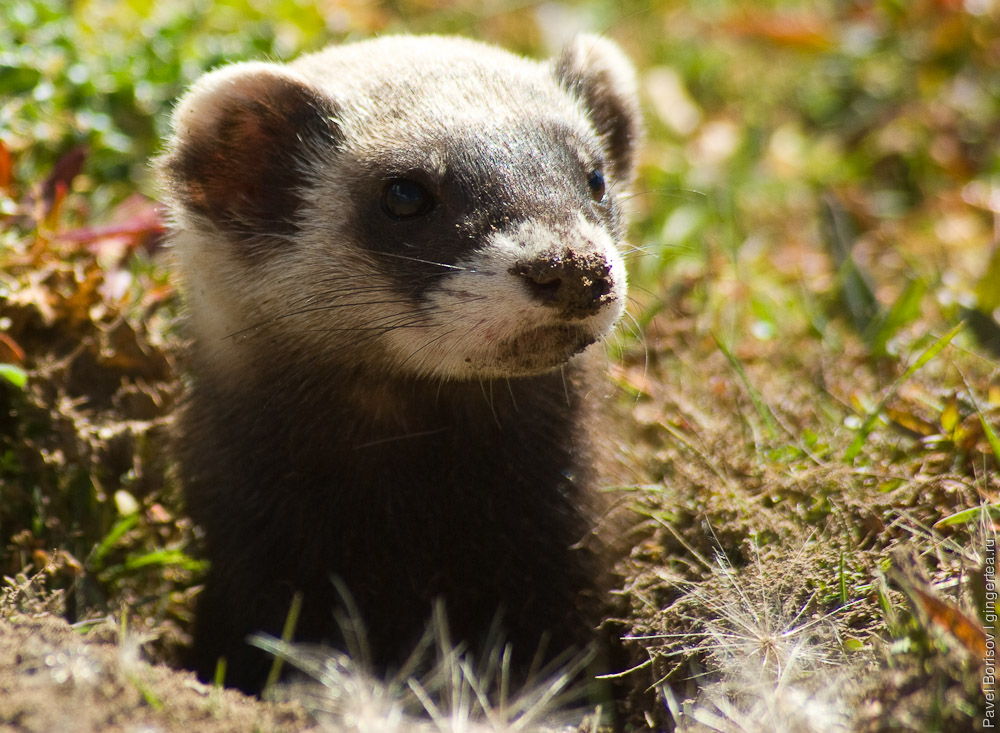
No comments:
Post a Comment
Note: Only a member of this blog may post a comment.